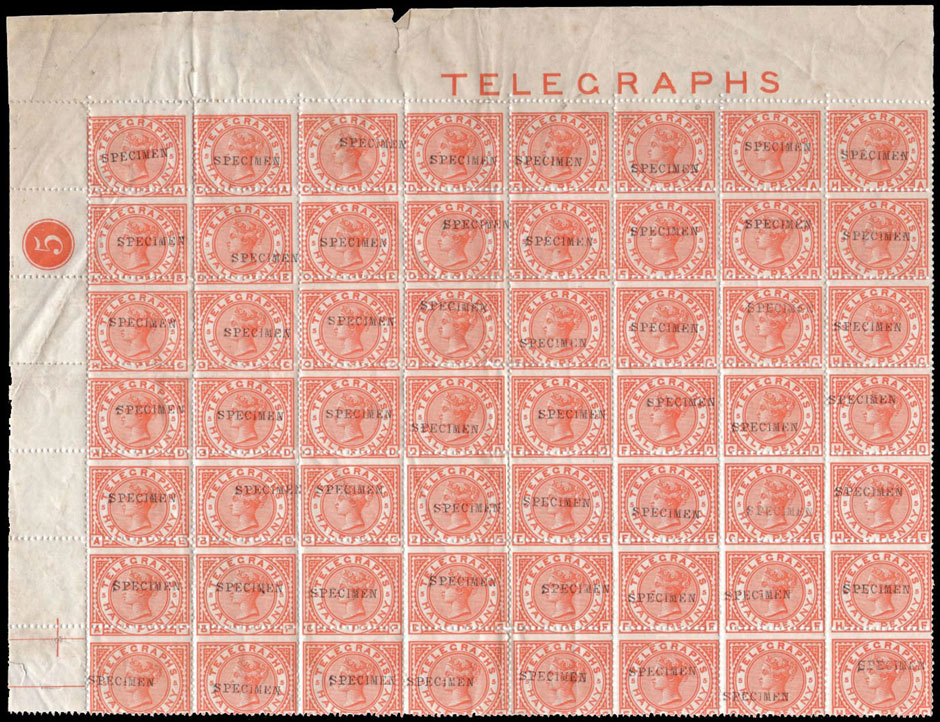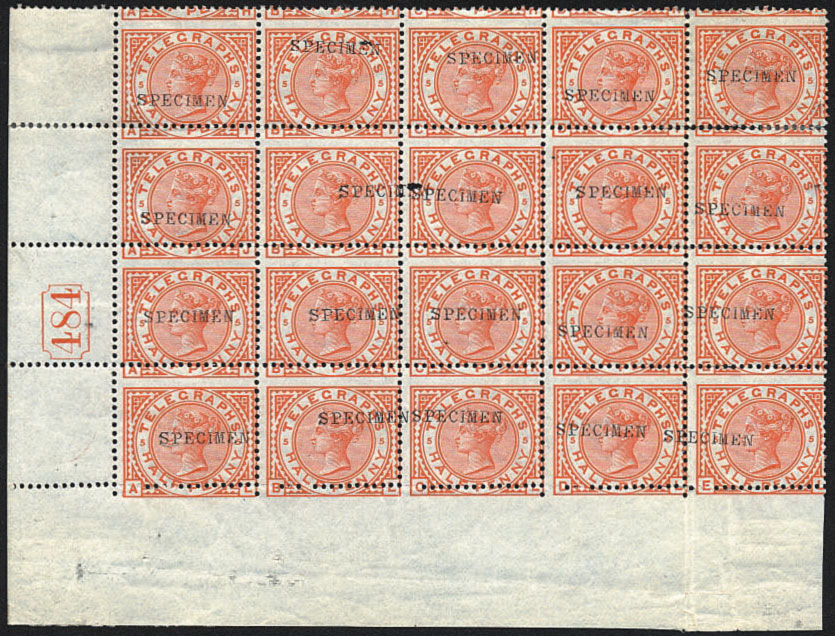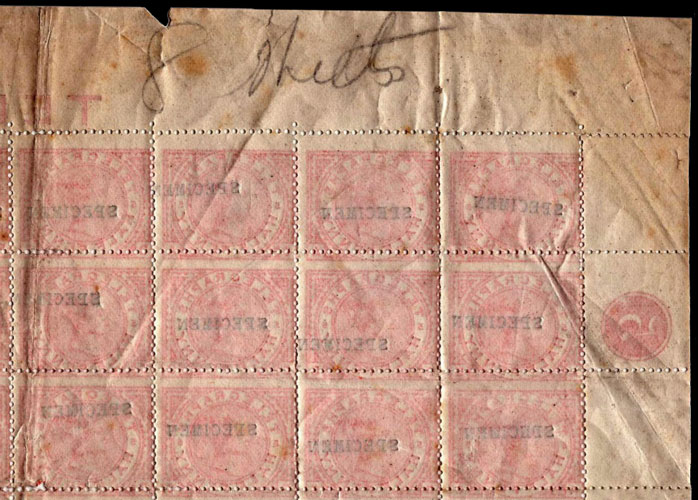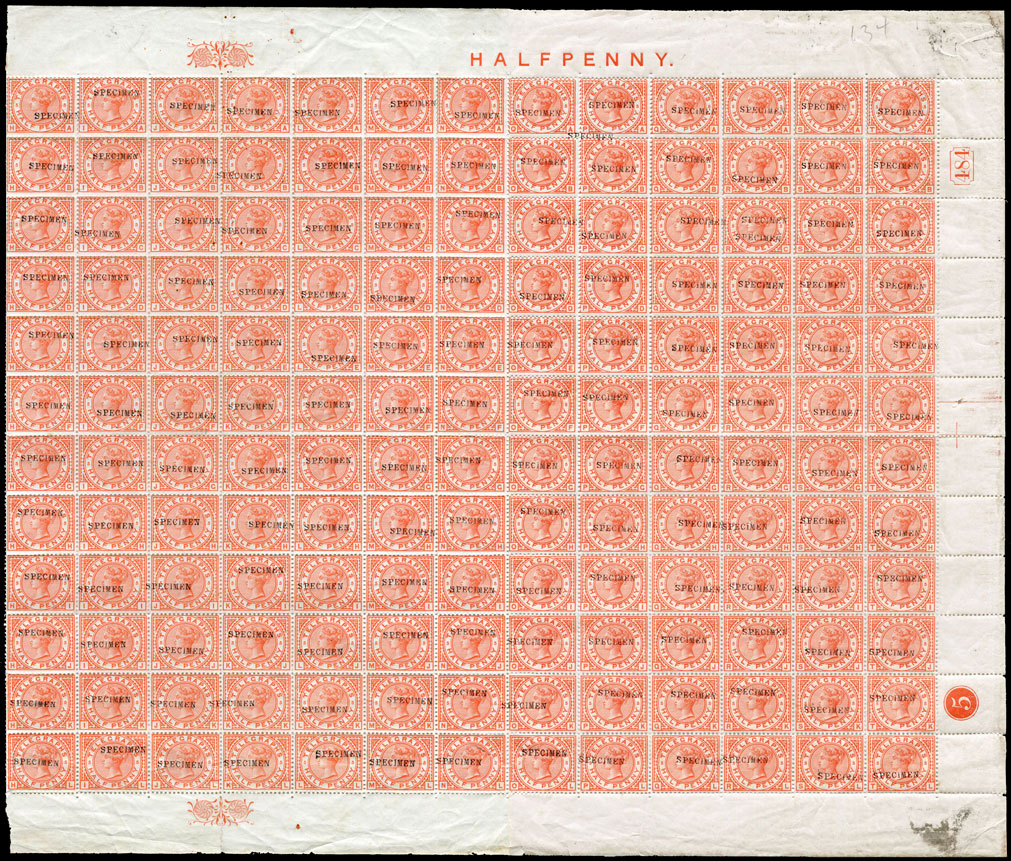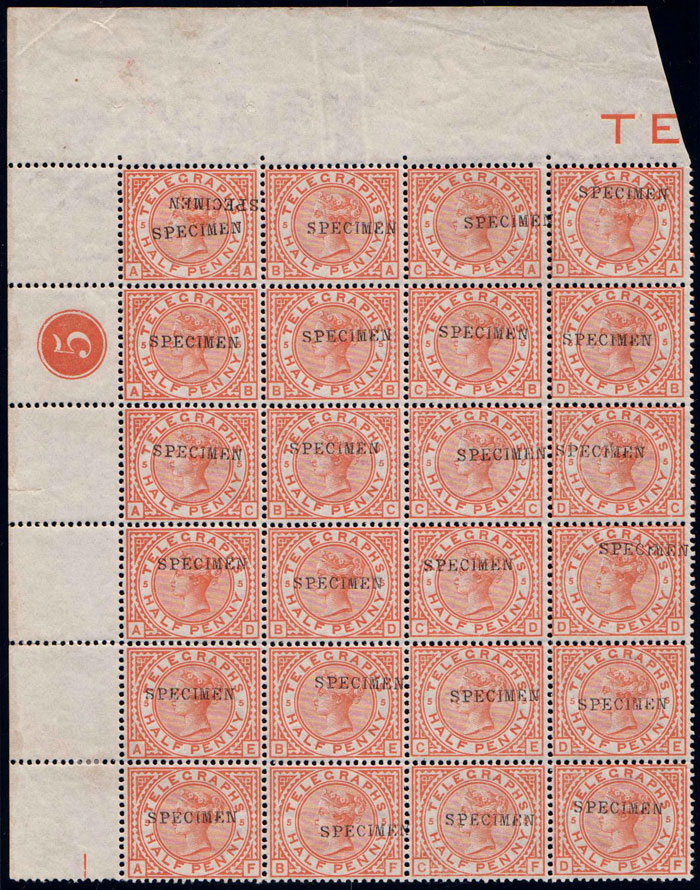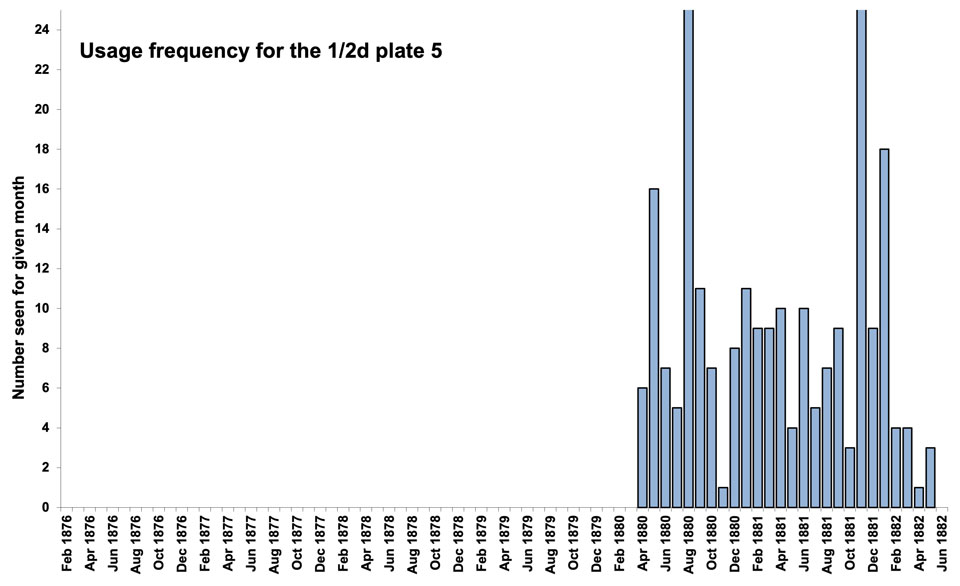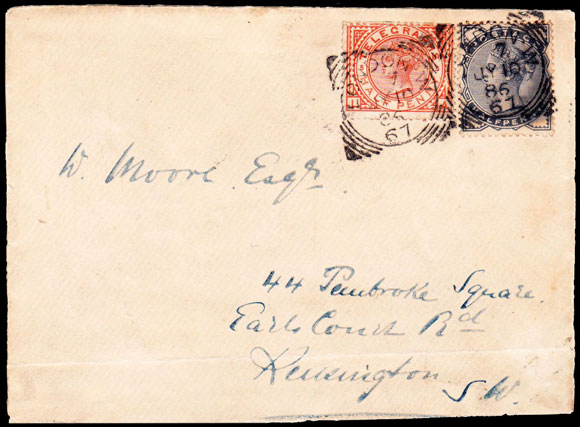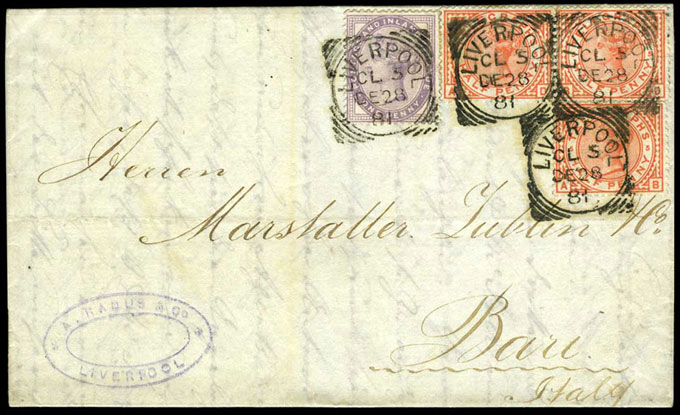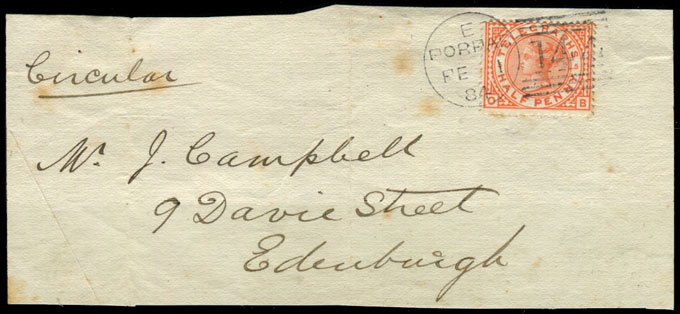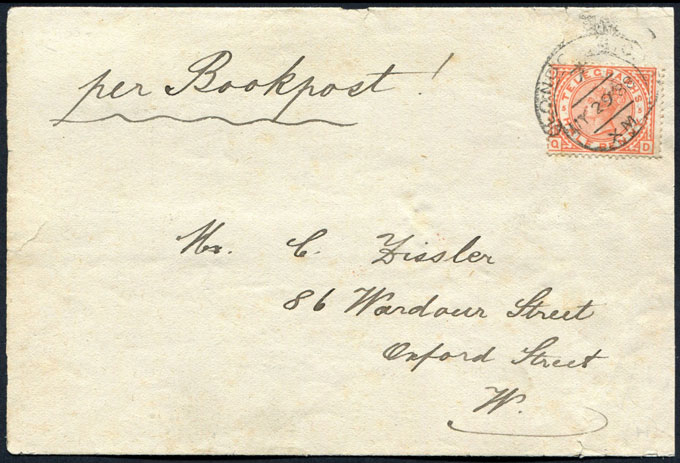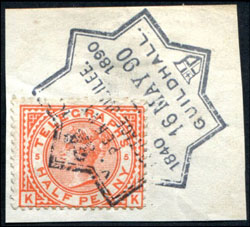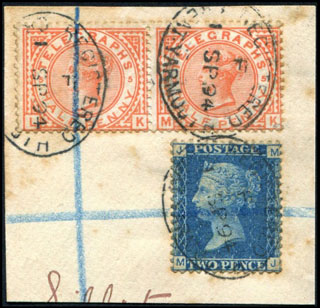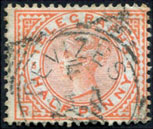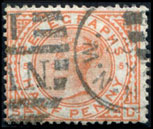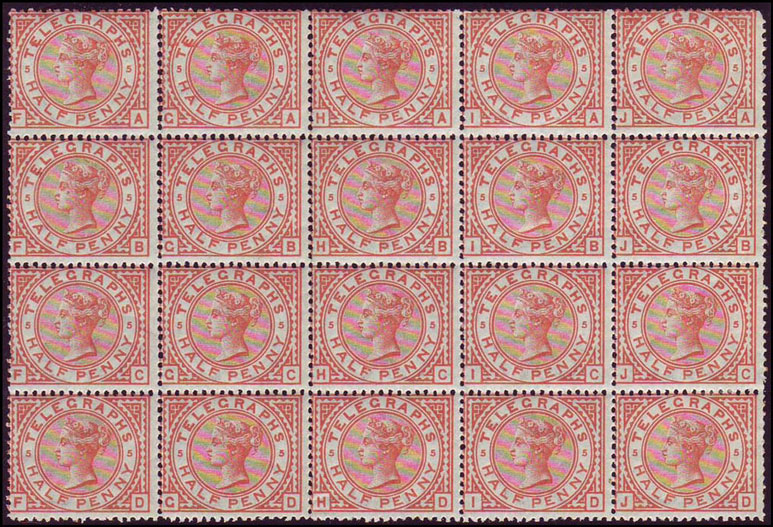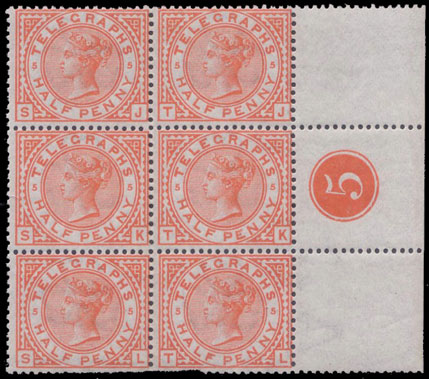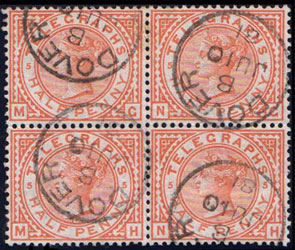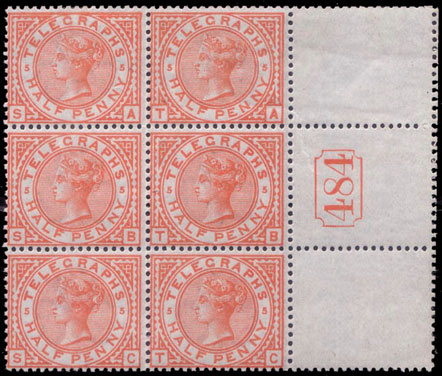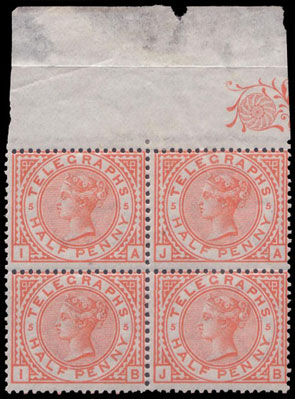1 Essays
2 Die Proofs
3 Sheet Layout
4 Plate Proofs
5 Paper
6 Imprimaturs
7 Colour Standards
8 Specimens
9 Issued Stamps
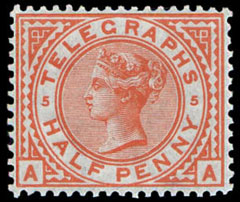
Date: 1 Apr 1880
Plates: 5
Printer: De La Rue
Watermark: Shamrock
Perforation: 14
In early 1880 changes in foreign telegraph rates created a need for a ½d telegraph stamp. It was decided to alter plate 5 of the 1d, which had not yet been put to press, by removing the words “ONE PENNY” to form a head plate, and creating a new duty plate to overprint the blank space with “HALF PENNY”. This required two printings per sheet. As a result the alignment of “HALF PENNY” varies.
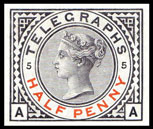
Similar to the £5 when it was altered from Telegraphs to Postage, there are two proof sheets of the ½d, one with just the duty plate in red, and a second with the head plate in black and the duty plate in red.
Essays
A one penny die proof was used as an essay for the alteration. It has “ONE PENNY” crossed through and manuscript “Halfpenny / this stamp / overprinted”.
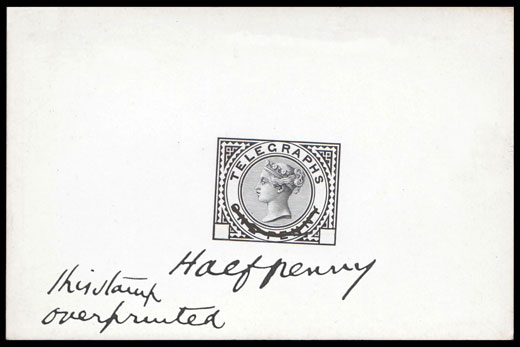
Reconstruction — Langmead Collection.
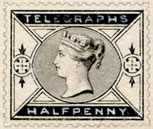
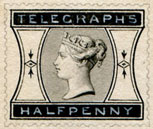
These are from a set of 12 black & white essays which are undated but believed to be circa 1880. Their purpose is not known, but they are likely not related to the issued stamps.
| — | ½d | — | — | black & white |
| — | ½d | — | — | black & white |
For more details on black and white essays click here.
Die Proofs
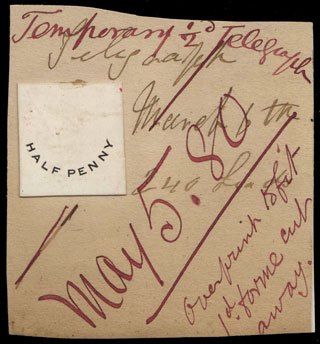
The only known die proof, with manuscript:
“Telegraph / March 6th / 240 Leads”
“Temporary ½d Telegraph / May 5. 80”
“Overprint to fit 1d. forme cut away.”
Ex A. J. Lowe.
Sheet Layout
The sheet had 240 stamps in one large pane, arranged as 12 rows of 20. Above the pane was “TELEGRAPHS HALF-PENNY.” with an elaborate division ornament between the words and repeated below the pane. Plate numbers were left of AB and right of TK, current numbers left of AK and right of TB. At the middle of each side was a cross and a horizontal line used as guides for perforating.
A Post Office sheet was the entire sheet, valued at ten shillings.
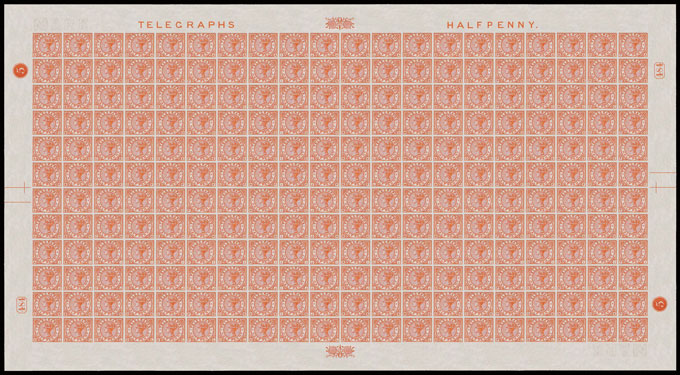
Computer generated image, click to enlarge.
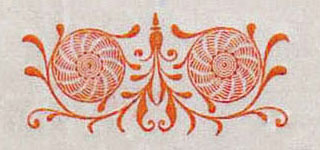
Elaborate division ornament.
Plate Proofs
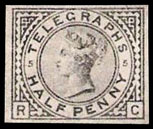
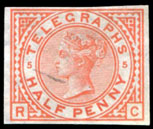
No plate proofs are recorded for this value. However, an illustration in Wright and Creeke shows an imperforate example lettered RC. Many of their illustrations were plate proofs but this one is less clear, and is equally likely to be an imprimatur. The imprimatur is shown for comparison and is similar, although the margins appear slightly different, but this could be due to the low quality image.
Paper
De La Rue used the paper they had in use for Irish dog license stamps, which was laid out in 12 rows of 20 with watermark Shamrock. This paper was also used for the 1d, £1, and £5 values.
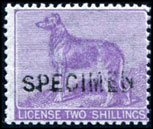
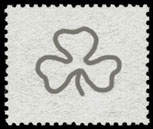
The watermark as seen from the front of the stamp.
For more details on Shamrock paper click here.
Imprimaturs
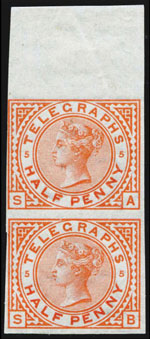
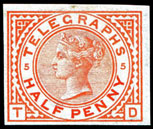
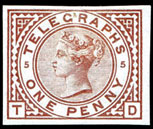
Plate 5 was re-registered on 13 Mar 1880. Vertical pair SA-SB has been incorrectly described as “imperforate — not from the imprimatur sheet”.
Imprimaturs show a distinct difference in colour between the head and duty (“HALF PENNY”) plates that does not occur on the issued stamps. Example TD is shown with a matched imprimatur for the 1d value taken before the plate was altered from 1d to ½d.
The registration sheets for the Telegraphs have been lost. However, we can reconstruct them from known examples and a clear pattern emerges. Most have a column of 12 taken, plus four from the adjacent column, and a plate number copy from the opposite corner. One sheet of each value has an extra column of 12 taken.
Red represents an institutionalised example.
Green a known example in private hands.
Blue is unknown but predicted by the pattern.
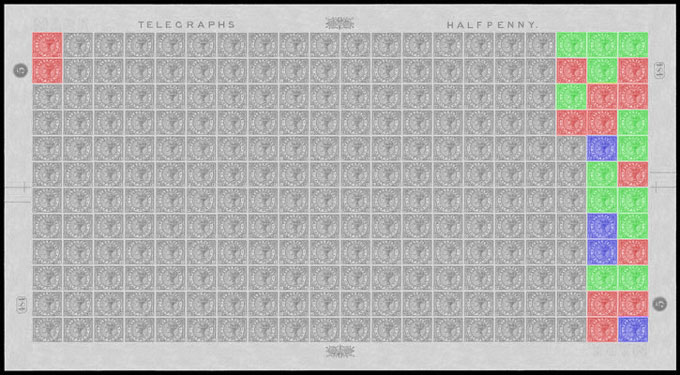
| Institutionalised/Total: | 13/30 |
| Royal Philatelic Collection: | AA-AB, SK-SL, TK |
| British Postal Museum: | RB, RD |
| Tapling Collection: | TF |
| Langmead Collection: | SC-SD, TB |
| Phillips Collection: | TC, TI |
Four pairs remain intact: AA-AB, SA-SB, SC-SD, and SK-SL.
Colour Standards
No colour standard sheet has been identified for the ½d, but could be one of the perforated sheets overprinted Specimen Type 9 below.
Specimens
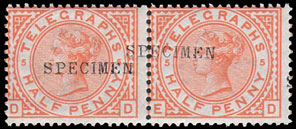
Plate 5 Type 9: common, from six to eight sheets.
The ½d overprinted with Specimen Type 9 is the most common telegraph stamp. At least 6 sheets were so overprinted. However, the reverse of one block states “8 sheets”, possibly the original total.
A framed complete sheet of 240 existed until the early 2000s when it was split between the left 7 and right 13 columns. The right part of the sheet is still intact with margins, and a block of 35 is known from the left part. Additionally blocks of 136, 56, 48, 35, 24, 20, 16, 15, 12 (3), 8, 7, 6 (2), 4 (10), strips of 4 & 3, and 2 pairs are known to us.
Some stamps have been overprinted twice with complete overprints, not partial as in above pair, which is common. One double overprint is on the complete sheet (RC), one in a block of 24 (AA, once upright and once inverted) and another in a block of 12 (MD).
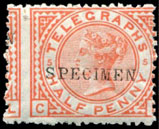
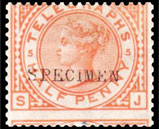
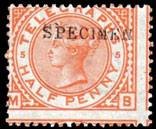
Many sheets were badly perforated, so much so they would otherwise could have been waste, as such they may not have been complete sheets. Plate and current numbers are common but complete ornaments are not. Other than on the complete sheet, just one ornament and one half ornament are in our database.
Click the images to enlarge.
Issued Stamps
Stamps were issued from the altered 1d plate 5 only.
The usage frequency graph shows that plate 5 was used from April 1880.
Click the graph to enlarge.
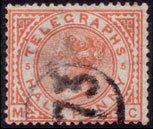
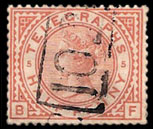
Issued Stamps — Plate 5
Plate 5 (current no. 484) was put to press on 13 Mar 1880. The number of sheets printed before telegraph stamps were discontinued is not recorded.
Scarcity #1 in mint telegraphs, #16 in used telegraphs.
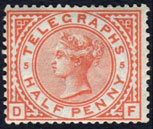
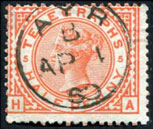
Mint stamps are common, the most common of all the mint telegraphs. Mint multiples are common with five pairs, 27 blocks of four, and blocks of 5, 6, 8, 10, 12, 14, 15, 16, 18, 20 (2) and 30 known to us. One block of four has half of the division ornament. There are three blocks of six and one block of four current number pieces, and two blocks of six plate number pieces.
Used multiples are less common with nine pairs, strips of three & four, and six blocks of four in our database. Nearly 20% of used examples have been used postally. The earliest known used example is 1 Apr 1880 at Ayr (illustrated).
No inverted watermarks are known to us.
Click the images to enlarge.
